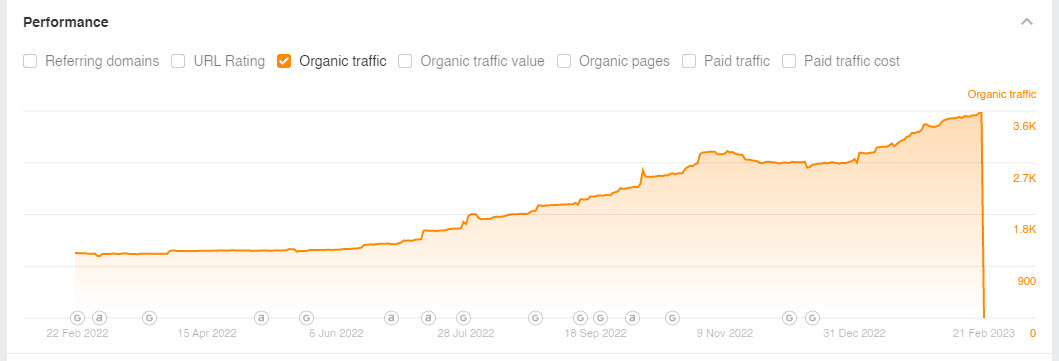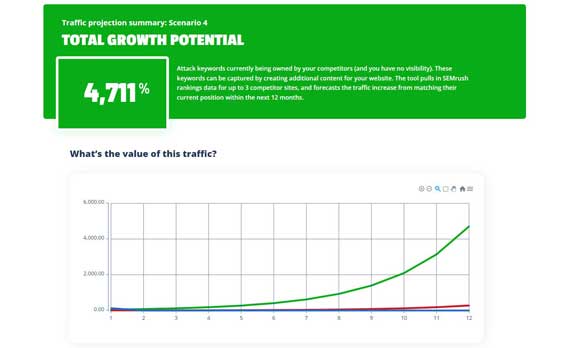Other SEO companies will not like us for saying this, but Technical SEO issues are often blown out of proportion.
And many SEOs use technical issues as a way to add more “busy work” to justify their monthly retainers. (We don’t do retainers!)
sNow, don’t misunderstand, there are a few crucial Technical SEO issues that should be addressed to ensure a good user experience and to avoid penalties from Google.
Any Technical issues with your site should be addressed in the first month of any SEO, and not drawn out or worst still used as an excuse by your SEO providers for poor results or a drop in results. Any good SEO provider will have your Technical issued addressed and fix first off.
We focus on the 80/20 approach with technical SEO.
Focus on What Gets Results
Every SEO audit will reveal a lot of problems. It’s easy for people to lose track of all the time-consuming mistakes. It’s worse that improving these errors doesn’t guarantee your site will rank higher in search results, or convert more visitors.
Avoid “busy work” and concentrate on what is important.
A handful of issues can cause most of the technical problems on your website. These are the most important to focus on and you will see the best return for your effort.
Prioritize technical SEO issues as listed below. These links and descriptions should provide all the information you need to tackle these issues.
Crucial Technical SEO Issues
- 404 Page: This error means that a link is not pointing to the correct page on your website. To update links or to redirect to new pages, you will need to either modify them or use a 301 redirect.
- Images: Images for your site should be in next-gen formats (JPEG 2000 or JPEG XR and WebP). This will make images and your site load faster.
- Canonical Points to [Blank]: Canonical links should only point to the pages you want to rank and note 4XX, 301s, etc.
- 4XX
- 5XX
- Redirect
- Orphan page (has no incoming internal links): An orphan page is one that has no incoming links. Most pages should have links to other pages within your site. Not all pages need internal links. However, not all pages will require internal links.
- Page Has Links to Broken Page: You can fix broken links by adding or removing them.
- Page Has No Outgoing Links: Be sure to include relevant links in your blogs to support your views. You do not want external links on sales pages.
- Broken Redirect: These links go nowhere (to 4XX). Make sure to update them so that traffic and link equity flow to the target page.
- Redirect Chains: Redirects should point from page A to page B. You do not want a redirect going from page A to B to C to D, etc. Redirect chains can increase load time and bounce rates, as well as provide a suboptimal user interface.
- Title Tag Missing or Empty: Every page needs a title tag. Replace the title tag on the page with one that describes it and targets the main keyword.
- Broken Javascript: Broken Javascript could affect your website’s usability. This is a technical problem that developers should address.
Important SEO Issues:
- 500 Page: This error is caused by a server problem. These errors can sometimes be temporary, but you will need to fix them.
- Duplicate Content: Google doesn’t penalize you for duplicate content (despite what you may read on some forums), but you can compete with yourself for similar topics. These posts can be combined instead.
- Broken Image: To improve user experience, replace the damaged image with a brand new one.
- Double Slash in URL: Search engines will likely ignore the extra slash, but you should review and remove it to ensure there is no confusion.
- Any Site Map Issues: Make sure you only include the most recent pages in your sitemap. This should happen automatically if you use a plugin. You will need to update the site map if it is not automatic.
Each case will determine the importance of other technical SEO issues. While some won’t give you a justified ROI, others can be fixed when updating pages.
It may seem tempting to fix every SEO Title and Meta Tag issue at the beginning. You’re adding extra work if you delete, merge, and rewrite a lot of your website.
Your Website Quality Audit (WQA), can be used to guide site changes. Focus on the technical issues that relate to pages that are top priorities for your SEO Strategy.
How to Use 301 and 302 Redirects
Sometimes, you may need to modify your URLs or remove pages from your website. To optimize your user experience and improve your backlink profile, you will need to use redirects.
There are two types the 301 and the 302. These are the main differences.
301 Redirects
A 301 redirect is permanent. This redirect preserves backlinks’ link equity and “link juice”, and transfers it to the new page.
You can also delete the page.
You can use many different redirect tools depending on the CMS you have.
You can easily redirect pages using a WordPress plugin such as Yoast.
302 Redirects
These links are temporary. These links do not transfer link equity to new posts but they allow you to compare the performance of new pages to old pages.
Why Site Speed Matters
I want you to count slowly to 5.
Why did I ask you to do that? Because that is the amount of time people will wait for a website load. The longer it takes, more people will bounce or leave the site and search for another one.
Many statistics show that customers will leave if your website takes more than 2 seconds to load.
These studies, however, are targeted at e-commerce sites. Visitors may wait a bit longer if your site is B2B.
People are not patient.
They expect websites (and everything else) to be quick.
Google’s Core Web Vitals update was launched in May 2020. This update was focused on site speed being a ranking factor.
Most Important Page Speed Factors
These are the most important ranking factors (and how to fix them):
- (LCP) Largest Contentful Paint: Under 2.5s
- (FID) First Input Delay: Under 100ms
- (CLS) Cumulative Layout Shift: Under 0.1s
You may need to consult with web developers to speed up your site.
Site speed is crucial.
If you don’t have the budget or are concerned about SEO, you might be able to run page speed insights on your competitors and find out how they do.
If their websites are slow, you might consider other urgent technical SEO problems. Site speed is important. It will eventually be addressed.
The sooner you act, the better.
Note: This is work best left to your web development team or a qualified SEO as it is very technical.
Which CMS Is Best for Your Business?
You have a few options for choosing a content management system (CMS) for your business. But we will always recommend WordPress. There is a reason it is the industry stanard and so widely adopted. There are other options like Drupal and Joomla, but those are not very user friendly and difficult to optimize.
What Are the Best WordPress Plugins?
This depends on what you need. While you want to avoid going plugin heavy and slowing your site down, there are several key plugins you should consider.
- Elementor: Rapidly build web pages and blog posts with a simple, drag-and-drop interface.
- Smush: This plugin optimizes images on your site in bulk and enables lazy loading (delayed loading for off-screen images).
- RankMath: This plugin helps ensure posts are optimized for search. (Just remember to use it as a guide and not obsess over getting all the orbs green. It’s a tool, but not the rule.)
- Easy Table of Contents: This plugin makes the content more skimmable by creating a ToC people can use to navigate posts easily.
How to Optimize Your Site Faster
It takes time to address technical SEO issues. It can be time-consuming if you have many other tasks.
It is not a good idea to attempt to power through content and link-building without fixing the critical issues on your site.
Even if you have great content, if your website takes more than 30 seconds to load, nobody will see it. Vistors will not have that kind of patience.
At Local JuggernautTM, we offer a technical blitz to optimize your site.
Whether you want us to work with your developer or you want to outsource your technical work directly to us, we can help.

